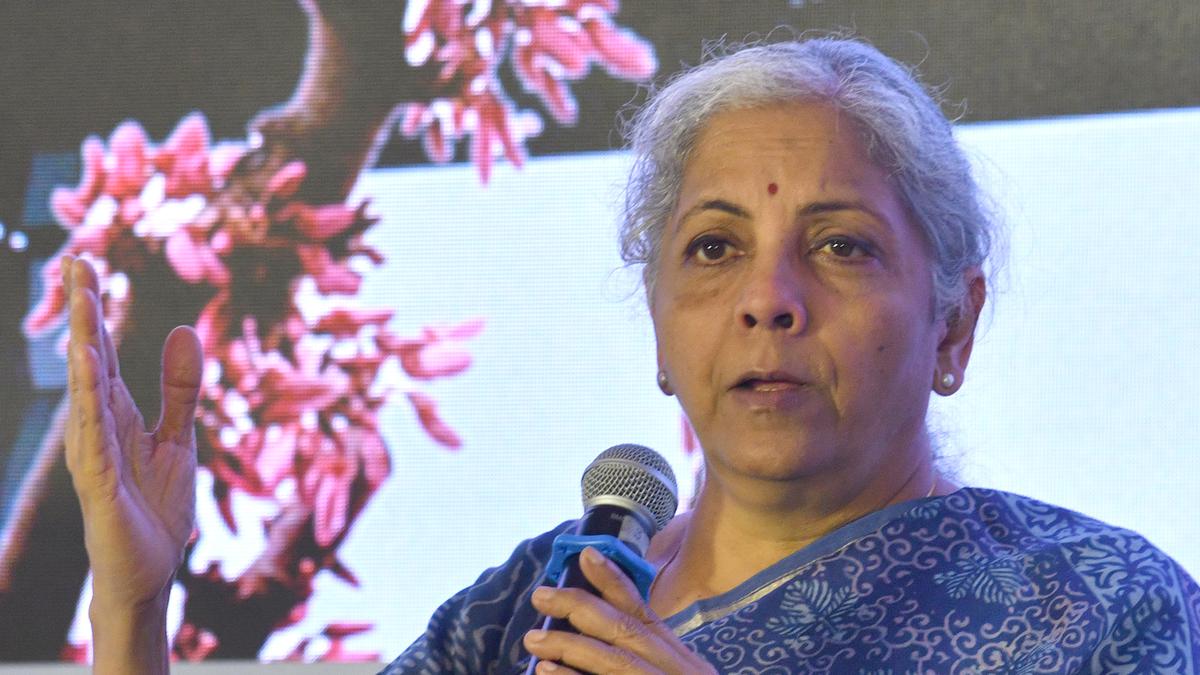
Focus on infrastructure, investment, innovation, inclusiveness to make India developed nation by 2047: Finance Minister
The Hindu
Finance Minister Nirmala Sitharaman government is focusing on nfrastructure, investment, innovation and inclusiveness to make India a developed nation by 2047
Finance Minister Nirmala Sitharaman on July 29 said the focus of the government is on four Is — infrastructure, investment, innovation and inclusiveness — to make India a developed nation by 2047.
She said India has necessary wherewithal to meet the goal set by Prime Minister Narendra Modi.
Besides several investor-friendly reforms undertaken by the government, she said, India has a very vibrant young population and the emphasis on skilling them to suit the requirement of the economy would yield dividend.
With the aim to build India a developed country by 2047, she said "the emphasis has been on four different issues [Is]. We are looking at infrastructure [first I] in a very big way. In the last 3 to 5 years, consistently, the public expenditure for infrastructure building has been ramped up significantly and it will reach Rs 10 lakh crore in 2023-24." With infrastructure comes investment (second I), she said, adding that emphasis on investment will promote greater participation of both the public and private sector.
So, she said, infrastructure is not just going to be physical such as bridges, roads, ports or airports, but also creation of digital infrastructure is given importance.
"We are looking for both public investment and private investment and creating necessary environment, the ecosystem as we often refer to for attracting private investment. And the global discussions which are going on blended finance is also something which we're looking at," she said at an event organised by CII here.
Pointing out that innovation is the third I, she said, "the government has opened up several areas inclusive of the space, nuclear energy, looking at getting out of fossil fuels. We have enough reason to believe the youth today are giving us solutions, which are very good for the frontier technologies that we're talking about, as much as for the legacy issues which persist in India for which we need solutions."

The Union Budget unveiled on February 1, 2025, has come at a time of unprecedented global uncertainty and a flagging domestic economy. The real GDP growth is estimated at 6.4% for 2024-25 and between 6.3-6.8% for 2025-26, a far cry from >8 percent growth required annually to make India a developed nation by 2047. While much attention has been devoted to the demand stimulus through income tax cuts, not enough is said about the proposed reforms in urban development, tariff rationalisation, and regulatory simplification aimed at making Indian cities and corporates more competitive. Since the majority of economic activity is located in cities (urban areas account for ~55% of GDP) and produced by large corporates (~40% of the national output and 55% of India’s exports), the above-mentioned reforms have a pivotal role in improving India’s trend growth rate. Below we unpack each reform.












